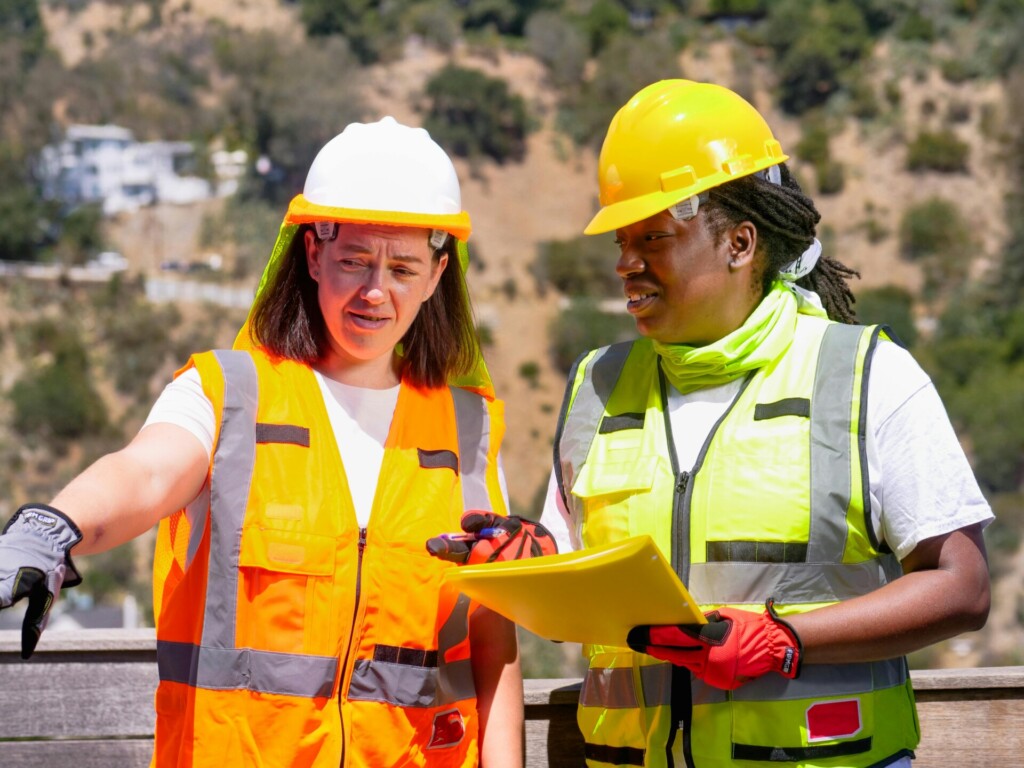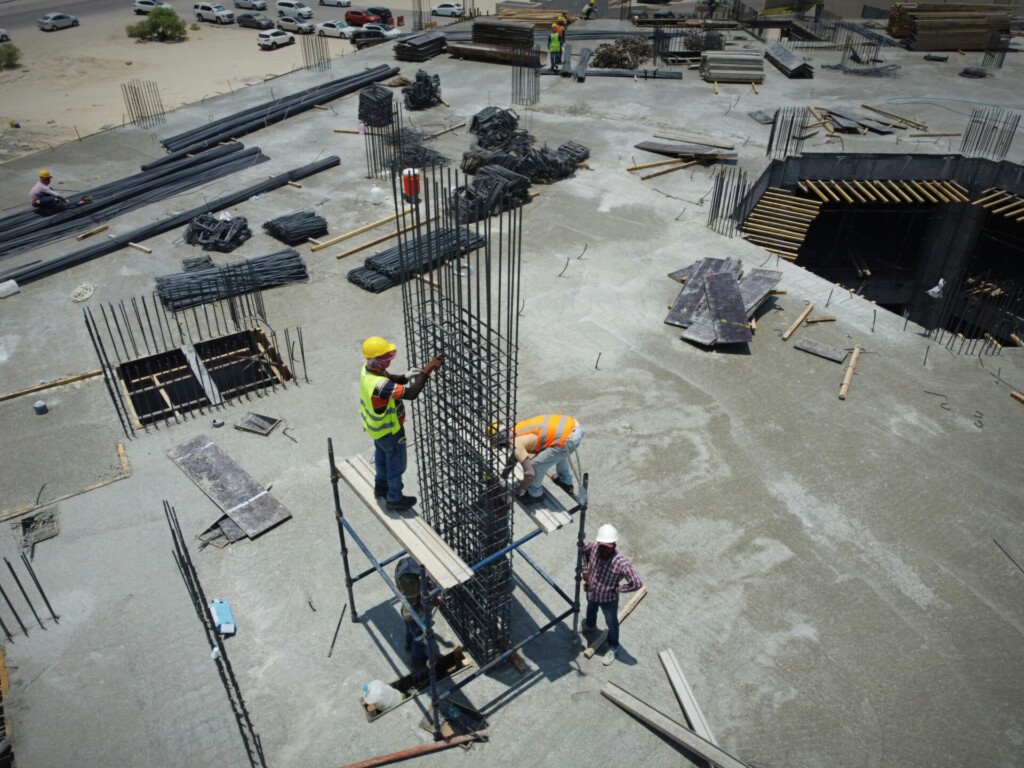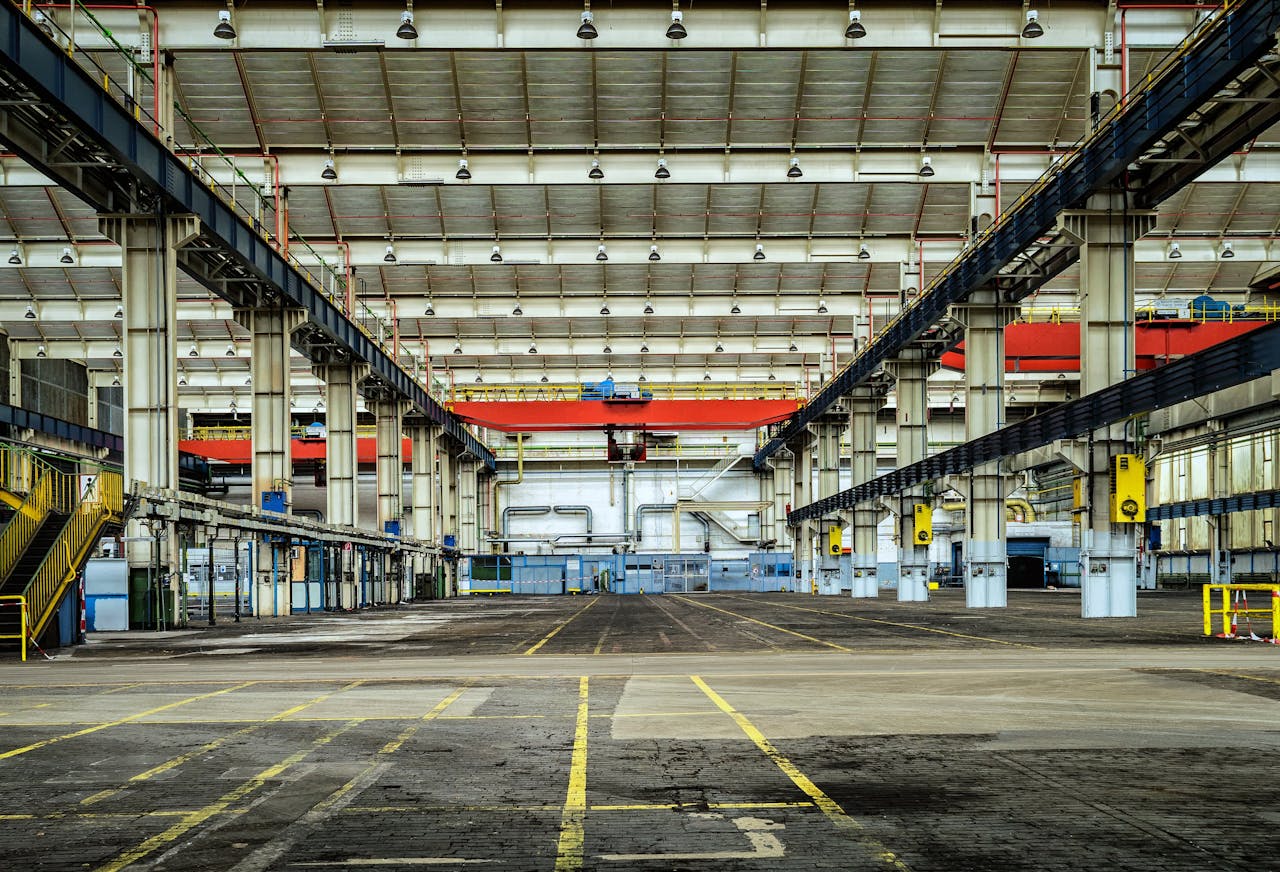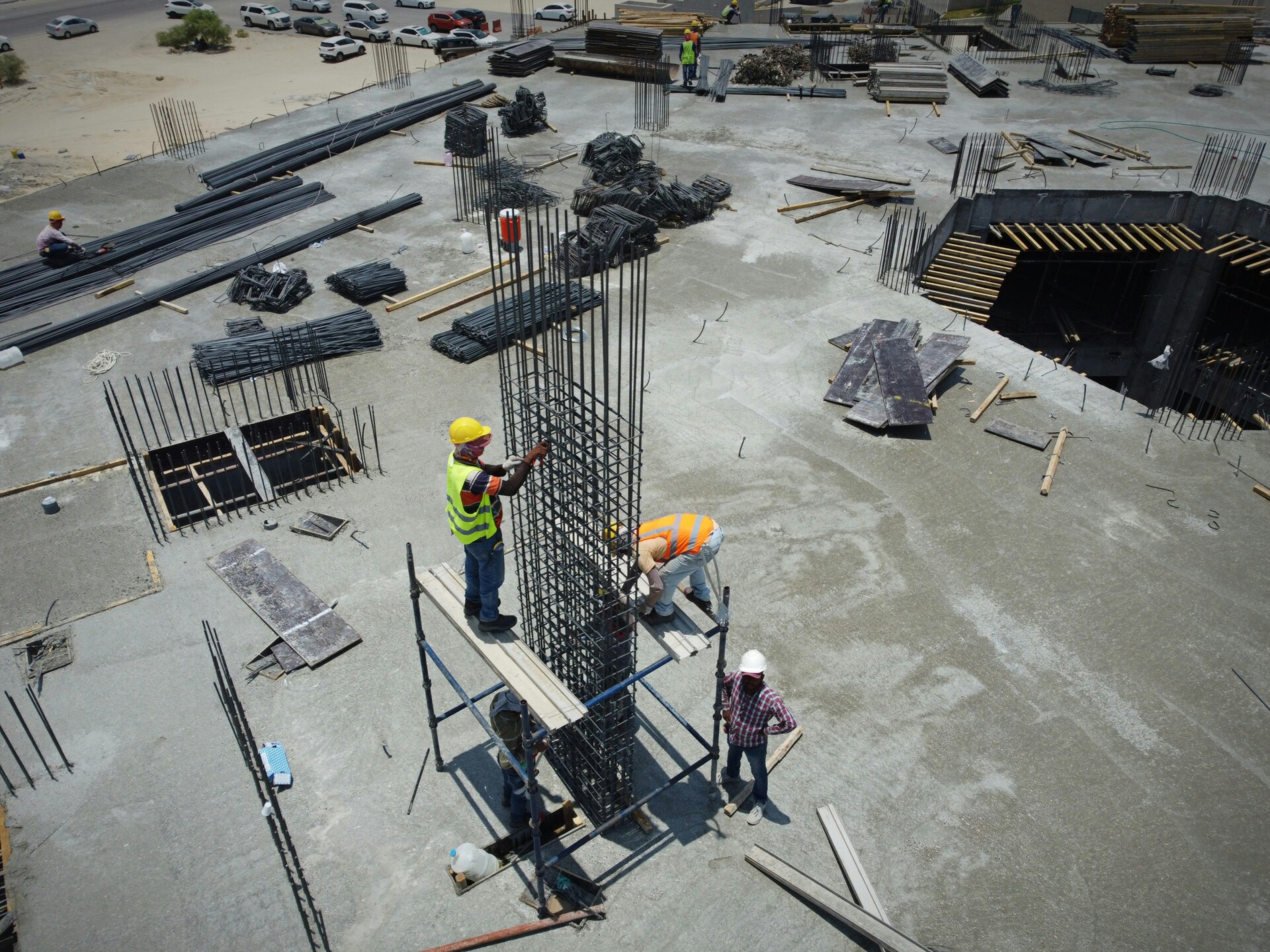Construction projects across the United States operate under two distinct OSHA regulatory frameworks, each designed for fundamentally different types of work environments. Understanding which standard applies to your project can mean the difference between compliance and costly violations.
OSHA 1910 governs general industry operations, covering manufacturing, maintenance, warehousing, and most permanent workplace activities. OSHA 1926 addresses construction industry hazards, applying to building, renovation, alteration, and repair work. These standards operate within Title 29 of the Code of Federal Regulations and organize safety requirements into comprehensive subparts A through Z that address specific workplace hazards and operational contexts.
When Does Each Standard Apply On A Jobsite?

OSHA defines construction work as work for construction, alteration, or repair, including painting and decorating. This definition drives which standard applies to any given task. When crews perform construction activities, OSHA 1926 governs their work regardless of where that work takes place.
Construction standards apply even inside general industry facilities during renovations or additions. A manufacturing plant upgrading its production line faces 1926 requirements for the construction portion of the project. The location does not determine the standard; the type of work does.
Operations and maintenance tasks fall under OSHA 1910. Routine maintenance keeps equipment working in its existing state and prevents failure or decline. This includes regular inspections, equipment servicing, and minor repairs that maintain current functionality.
The distinction between maintenance and construction requires case-by-case determination. Scale and complexity matter significantly in this assessment. Simple pipe repairs typically qualify as maintenance under 1910. Complete system replacements or major alterations often shift into construction territory under 1926.
Who performs the work makes no difference in standard selection. Employee crews and outside contractors follow the same rules based on the task itself. A facility maintenance team renovating office space must comply with 1926 standards just like an external construction contractor would.
On dedicated construction sites, OSHA 1926 serves as the default standard for all work activities. However, all workplaces must still meet applicable OSHA 1910 minimum requirements when those standards provide more stringent protections than their 1926 counterparts.
How Do Fall Protection Requirements Differ Between 1910 And 1926?
The threshold height stands as the most significant difference between these standards. OSHA 1910 requires fall protection at 4 feet, while 1926 kicks in at 6 feet. This 2-foot gap reflects the different risk tolerances between general industry and construction work, where temporary conditions and evolving site layouts create unique challenges.
Both standards share several common guardrail requirements. The top edge must sit at 42 inches above the walking-working surface, with a tolerance of plus or minus 3 inches. These systems must withstand a force of at least 200 pounds applied in any outward or downward direction at any point along the top edge.
Shared Requirements
Self-closing gates represent another area of alignment between the two standards. Both 1910 and 1926 mandate these automatic barriers at openings where workers might otherwise walk into hazardous areas. The gates must close and latch automatically, preventing accidental exposure to fall hazards.
Personal fall arrest systems operate under similar parameters in both standards. The maximum free fall distance cannot exceed 6 feet, and the maximum arresting force on an employee wearing a body harness cannot exceed 1,800 pounds. These limits protect workers from the severe forces that can cause internal injuries during fall arrest.
Standard-Specific Differences
Safety nets highlight a major distinction between the two regulations. OSHA 1926 requires safety nets to be installed as close as practicable under the working surface, but never more than 30 feet below. The nets must extend outward from the work surface by specific distances based on the vertical drop. OSHA 1910 does not address safety nets at all, reflecting the different nature of general industry work.
Gate and opening requirements differ in their specific applications. While both standards require self-closing gates, OSHA 1910 focuses on floor holes and general access points throughout facilities. OSHA 1926 specifically calls out hoisting areas, where materials and equipment move vertically through openings in floors and platforms.
Low-Slope Roof Protections
OSHA 1910 establishes detailed requirements for low-slope roofs that create a tiered approach based on distance from the edge. Within 6 feet of the roof edge, workers must have guardrail systems, safety net systems, travel restraint systems, or personal fall arrest systems with no exceptions.
Between 6 and 15 feet from the edge, the same protection applies, but employers may use a designated area for work that is both infrequent and temporary. At 15 feet or more from the roof edge, protection remains required, but no fall protection is allowed only when the work meets strict criteria: it must be both infrequent and temporary, and employees must be prohibited from going within 15 feet of the edge without proper protection.
Inspection Exemptions
The standards diverge significantly on inspection exemptions. OSHA 1926 allows exemptions for inspections, investigations, or assessments conducted before construction begins or after completion. However, this exemption only applies when exposure to fall hazards is brief and workers can accomplish their tasks without entering the danger zone.
Extended exposure near fall hazards voids this construction exemption entirely. Workers conducting inspections that require close proximity to edges or extended time in hazardous areas must use standard fall protection. OSHA 1910 offers no such inspection exemption, requiring fall protection for all maintenance inspections regardless of duration or purpose.
What Other Key Differences Should Construction Teams Know?

Beyond fall protection requirements, several operational differences between OSHA 1910 and 1926 affect daily construction activities. We encounter these distinctions regularly on mixed-use projects where both general industry and construction standards apply.
Electrical safety requirements create the most noticeable difference in field operations. OSHA 1926 requires ground fault-circuit interrupters (GFCIs) or an assured equipment grounding program on all 120-volt, non-permanent outlets used by employees. This applies to temporary power setups, extension cords, and portable equipment that construction crews use throughout a project. OSHA 1910 does not address this specific requirement, leaving general industry facilities without the same level of mandated electrical protection.
Fire protection alternatives provide construction teams with flexibility that general industry lacks. Under 1926, we can substitute a 55-gallon water drum or a half-inch water hose in place of traditional fire extinguishers during construction activities. This accommodation recognizes the temporary nature of construction work and the challenges of maintaining standard fire protection equipment across active jobsites. OSHA 1910 does not permit this substitution, requiring conventional fire extinguishers in general industry settings.
Crane and hoist operations receive comprehensive coverage under construction standards. OSHA 1926 addresses crane-suspended platforms, material hoists, and personnel hoists with detailed safety requirements for rigging, operation, and inspection. These provisions reflect the heavy lifting equipment commonly used in construction projects. OSHA 1910 does not include these specialized requirements, as general industry typically uses different material handling methods.
Rigging specifications demonstrate another area where construction standards provide detailed technical guidance. OSHA 1926 includes comprehensive tables for wire rope clip spacing and numbering requirements, essential for safe lifting operations with cranes and hoists. These tables specify exactly how many clips to use and proper spacing distances based on rope diameter and load requirements. OSHA 1910 does not include these detailed rigging tables, reflecting the different equipment needs between construction and general industry operations.
How EB3 Construction Decides Which Rule To Follow
We approach standard selection through a systematic process that keeps crews compliant and projects moving safely. The key lies in understanding that both 1910 and 1926 standards can apply to different aspects of the same project, depending on the specific tasks being performed.
Task classification forms the foundation of our decision-making process. We categorize work as construction under 1926 when it involves renovations, additions, alterations, painting, repair, or demolition activities. For routine maintenance tasks that keep existing systems operational without major modifications, we default to 1910 standards unless the scale and complexity elevate the work to construction-level activity.
Fall protection thresholds provide clear guidance for elevation work. We apply the 4-foot threshold when operating under 1910 standards and the 6-foot threshold for 1926 construction activities. This distinction affects everything from scaffold requirements to roof work protocols, making accurate classification essential for worker safety.
Mixed-use sites require careful attention to task-specific applications. We apply standards based on what crews are actually doing in each location rather than making blanket decisions for entire projects. A facility renovation might involve 1926 standards for structural modifications while simultaneous equipment maintenance follows 1910 requirements.
When uncertainty arises about which standard applies, we follow the more conservative requirement. This approach ensures compliance regardless of interpretation while providing maximum protection for our teams. We document our rationale for each decision, creating a clear trail of reasoning that supports both safety protocols and regulatory compliance.
Training and documentation complete our standard selection process. We ensure crews understand which subparts A through Z apply to their specific tasks and maintain records of training and decision-making processes. This systematic approach keeps our projects compliant while providing crews with clear guidance for safe work execution.
Conclusion And Next Steps

OSHA 1910 governs general industry workplaces. OSHA 1926 governs construction activities. These standards address different workplace environments and cannot be used interchangeably on projects.
For construction work, we apply 1926 standards unless a more stringent 1910 requirement provides better protection. Key differences include fall protection thresholds, safety net requirements, GFCI provisions, and crane/rigging specifications. The 4-foot versus 6-foot fall protection trigger points alone can significantly impact site planning and equipment selection.
Task classification drives standard selection. Classify each activity as construction or operations/maintenance work. Apply the correct standard based on the work type and location. When uncertainty exists, follow the more conservative requirement to ensure maximum protection for field personnel.
Train teams on both standards and their applications. Document decision-making rationale for OSHA compliance audits. Reference the appropriate subpart within each standard to locate specific requirements quickly during field operations.
Ready to ensure your construction projects meet all applicable OSHA standards? Contact EB3 Construction for expert guidance on safety compliance and construction management.




